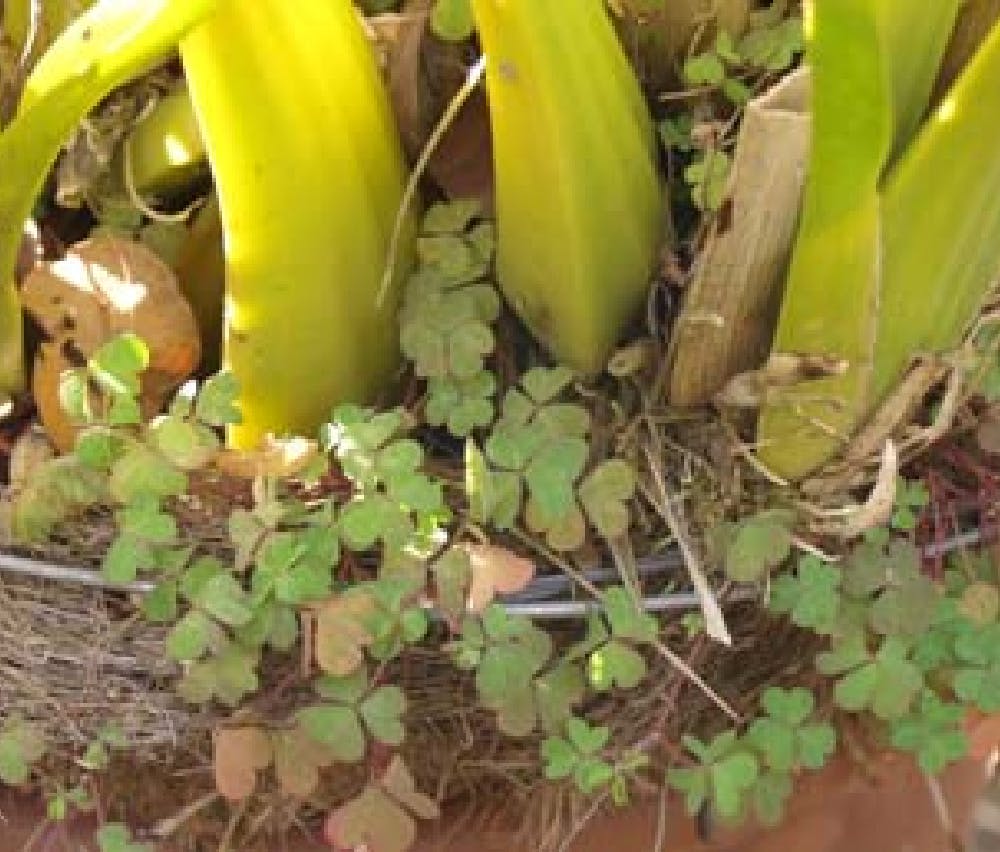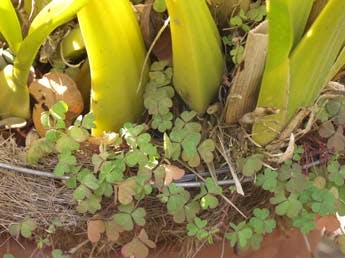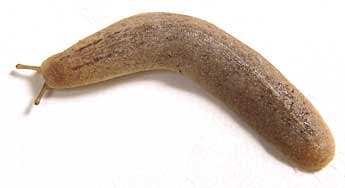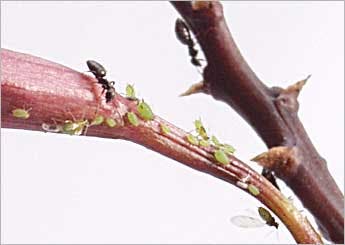
Coming in from the Cold


Gallery



Additional Information
By Susan Jones
Visually inspect the upper and undersides of leaves and flowers, and around the base of the plant. Check the growing medium and pot or basket exterior from top to bottom. Some growers recommend a few treatments with a systemic insecticide at weekly intervals before bringing plants back in for the fall, even if no pests are in evidence.
A sampling of the many orchid pests growers should be on the lookout for after summering plants outdoors is listed on the opposite page.
In addition to insects, all sorts of weeds can establish in orchid pots or baskets, siphoning off needed water, light and fertilizer from the host orchid. Once introduced into a protected environment such as an indoor growing area, they can quickly spread through a collection.
Controls
The key to control is persistence. Regardless of method or chemical used, remain vigilant and expect to make at least two to three weekly applications.
Alcohol
A popular home remedy is swabbing bugs off plants with isopropyl (rubbing) alcohol and a Q-tipTM. This works for smaller populations of aphids, mealybugs and scale.
Repotting
During extreme infestation, consider replacing the potting medium. Media can harbor weed seeds, as well as pest eggs and crawlers, so dispose of it in a compost pile or in the garbage. When repotting, a close inspection, and if necessary, a very gentle cleaning and spraying of the roots is essential.
Oils, Soaps, and Sterilants
Horticultural, neem, and mineral oils smother the insect’s breathing pores. These and insecticidal soaps, which dissolve the insect’s cuticle, are generally considered safer for use around humans, pets, and plants than insecticides. Weekly applications reduce populations of mites, aphids, scale, mealybugs, sow bugs and pill bugs.
Growth Regulators and Chitin Inhibitors
Insect-growth regulators, such as Enstar II, include a growth regulator that kills eggs and prevents insect maturation. These need a spreader-sticker (like silicon) to be effective. They are generally regarded as safe around humans and pets.
Insecticides
Persistent or heavy infestations may require last-resort applications of synthetic insecticides. Some of the more effective insecticides are Orthene (wettable powder), Malathion (liquid), Diazinon (liquid), and Carbaryl (water-based emusifiable concentrate). Always follow label directions and never exceed the minimum recommended concentration given in mixing directions. Systemic insecticides (Orthene, Shield) absorb into the plant’s sap stem, poisoning chewing and sucking insects. Pyrethrum, a natural insecticide derived from plant sources, attacks insects’ nervous systems.
Individual Pests
Most insecticides have little effect on mites, but there are a number of chemicals specifically for mite control (called acaricides or miticides). A homemade general insecticide that is also effective against mites is l pint (.57 1) each of 409 household cleaner and rubbing alcohol, mixed with water to make 1 gallon (4.55 l) of spray.
When controlling aphids, mealybugs and scale, one must also eliminate any ants that protect and farm them. Insecticidal sprays are effective against worker ants that transport and protect the other pests. Use this in conjunction with sugar-based ant baits to kill off the rest of the colony.
For snail and slug control, organic (such as Sluggo, EscarGo, and Worry Free) and chemical baits (such as metaldehyde) are available from garden supply retailers. Many growers also hand-pick the critters off or set out a small tuna-fish type can filled with beer to drown the mollusks. Repotting and thoroughly cleaning all old media from the orchid’s roots will eliminate any eggs that may be lurking in the pots.
Roaches, pill bugs, sow bugs and ants can be driven from a plant by immersing the pot, right up over the top of the media, in a bucket of water. The insects will emerge to avoid drowning, and may then be disposed of.
Roaches may also be controlled through the use of baits, but learn quickly to avoid many chemical baits. Roaches will eat borax, however. West Palm Beach Judging Center Photographer Greg Allikas’ simple homemade bait can be constructed by gluing a few boric acid tablets (available in grocery stores) to the inside bottom of an empty 35-mm film can. Set the film cans horizontally on the surface of plants’ media.
Weeds must be eliminated by hand. Herbicides are likely to damage or kill the orchid host along with the weed. To eradicate well-established weeds, it may be necessary to repot the plant in order to eliminate seeds in the medium.
Final Considerations
On the extreme side, for a plant showing signs of decline from pest or disease,consider whether the low likelihood of rejuvenating the plant justifies the expense and effort of continued treatments. Destruction of a sick plant can not only be used to justify the purchase of a new, healthier one, but may keep the rest of the collection from becoming infected, making it a precaution well worth taking.
Never apply any liquid pest treatment in direct sunlight or high heat. To prevent burning of tissues, always shade plants until the solution dries. Whenever chemical controls are employed, always check to see that the product has been approved for application to orchids, and follow carefully all instructions for the product’s safe use. To minimize risks of developing a treatment-resistant pest population, change methods and chemicals occasionally; do not use the same chemical mix more than three to four times sequentially.
Before nighttime temperatures dip too low, take the time to return orchids summering outdoors to their indoor growing spaces. In addition to checking for insects and other pests, remember that a change in environments, especially the light conditions and humidity levels, can impact how successfully your orchids make the transition from the garden back into the greenhouse or home.
Inspect Orchids for These Pests Prior to Bringing them Indoors
Aphids can be found on new growth, at the base of buds, on flowers and on the undersides of leaves. They feed on plant juices, causing poor growth, stunted plants or curled and distorted leaves. Where buds are attacked, the flower — if it opens at all — will be mottled and distorted. The sap sucking may result in wilting, deformed plant growth, yellowing, and even loss of leaves. Another sign of aphids is the presence of ants or sooty mold attracted to the honeydew secreted by these insects. Aphids’ salivary secretions can also be toxic to their host plant. Traveling between plants, aphids can introduce and spread virus and disease.
Mealybugs suck the sap from plants; they feed under bracts and sheaths, and onthe roots. Signs of an infestation include small whitish, powdery or cottony looking deposits on plants. As the damage progresses, leaves may curl, yellow, become stunted, and/or drop. In addition, flower production and stem growth may be reduced. Like aphids and some scales, mealybugs also secrete honeydew, which attracts ants and promotes the growth of sooty molds.
Mites, due to their almost microscopic size, are often detected by the damage they inflict. This makes a plant’s leaves look silvery, especially on the underside, where they have killed the cells of the surface layer. From the top, the leaf often has many tiny yellow spots that turn brown over time. Mites can severely weaken and disfigure orchids by sucking sap and chlorophyll, causing leaves to blanch and appear silvery, and bruised-looking areas on flowers. Because of their feeding style, they are also potential vectors of diseases.
Pill Bugs and Sow Bugs are nocturnal scavengers that prefer to live in humid, sheltered areas that have plentiful decaying organic material (like broken down orchid media), such as orchid pots. They feed on the fungi and bacteria in the dead and rotting vegetation. Orchid roots are damaged when these bugs eat the fungi and microorganisms that inhabit the root surfaces.
Roaches enter orchid pots through drainage holes and remain hidden in the growing media by day. Plants kept on the ground are especially vulnerable. The presence of roaches is indicated by their damage to plants (nibbled flowers, root tips and roots, and new growth).
Scale establish on the undersides of leaves, down in leaf axils, and beneath the papery sheaths on orchid pseudobulbs, and so may go undetected until they reach infestation level. Adult scale have a waxy protective coating, under which the insect feeds on plant sap, creating chlorotic spots on plant leaves.
Snails and Slugs prefer to eat blooms, roots and tender new growths, although they will consume any plant part. They do their damage primarily at night, leaving translucent, shiny slime trails; holes with uneven brown edges eaten through the flower tissues; nibbled roots — thicker roots may only have small pockmarklike holes eaten into them, while smaller, finer roots may be eaten clean through; new growths may be damaged or chewed down to a nub.
Susan Jones was the editor of Awards Quarterly and assistant editor of Orchids. American Orchid Society, 16700 AOS Lane, Delray Beach, Florida 33446
All reuse must contain the follwing:
Reprinted from the SEPTEMBER 2003 issue of Orchids -- The Bulletin of the American Orchid Society. Copyright American Orchid Society --www.aos.org

FREE ACCESS: Orchid DealWire
Get notified when orchid vendors have special promotions and exclusive savings.



